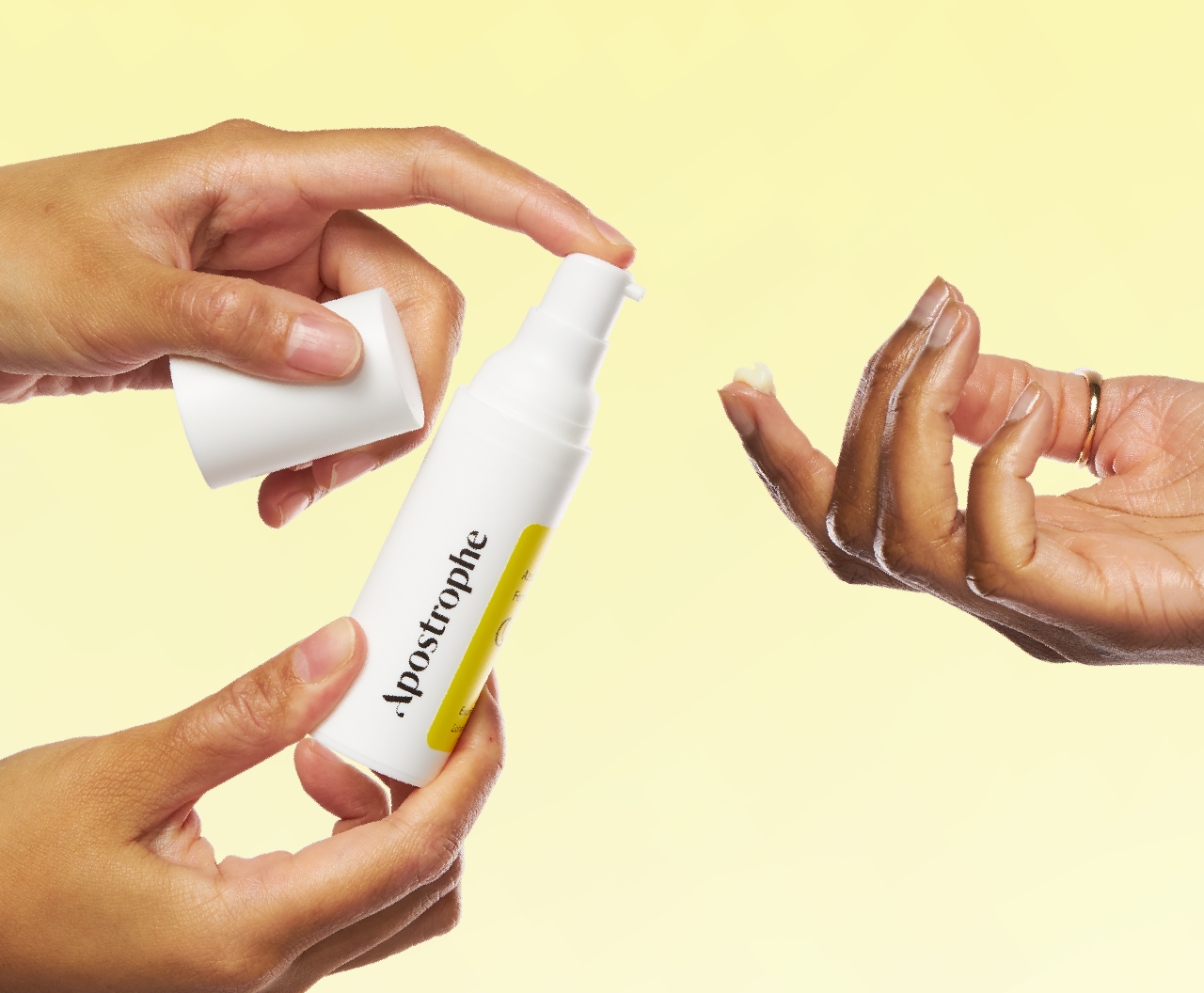Education
Is It Safe to Use Tretinoin With Botox Treatments?


SHARE
Education
Is It Safe to Use Tretinoin With Botox Treatments?
Medically reviewed by Kristin Hall, FNP
Written by Apostrophe Team
Last updated 4/1/2024
Botox® and tretinoin are two popular treatments available to reduce the visibility of facial wrinkles.
One is a neurotoxin that’s injected into the muscles of the face. The other is a topical cream that’s applied daily.
Because botox and tretinoin both work effectively to make wrinkles and other signs of aging less visible, people are sometimes interested in using them together.
Because botox and tretinoin affect different parts of the face (in the case of botox, the muscle underneath the facial skin, and for tretinoin, the epidermis layer of the skin), using these two treatments at the same time is considered safe.
Below, we’ve explained how botox and tretinoin work, with a focus on the major differences between these two popular and effective anti-aging treatments.
Botox Affects the Facial Muscles Beneath the Skin
Botox works by blocking the release of a neurotransmitter called acetylcholine, thereby blocking the contraction of facial muscles that can cause wrinkles to be more apparent.
When you get botox injected, it prevents the nerves from signaling to the facial muscles. Without these signals, the muscles affected by botox can’t contract. This causes the muscles to relax and the facial wrinkles to soften and become less pronounced.
Although botox can make wrinkles significantly less visible, it doesn’t affect the skin. Instead, botox works purely on a muscular level, preventing the contractions that cause wrinkles to develop in the first place.
It’s important to know that because botox doesn’t directly affect the skin, wrinkles caused by sun damage generally don’t respond as noticeably to botox as wrinkles caused by muscular contraction.
Luckily, these wrinkles do respond to tretinoin, making the botox-plus-tretinoin combination a powerful one for slowing and reversing visible signs of skin aging.
On the whole, it’s best to think of botox as a treatment for wrinkles that are apparent with moving facial muscles (smiling, furrowing your brow, frowning) while tretinoin can help treat the fine lines and sun spots resulting from UV exposure.
Tretinoin Affects the Skin, Not the Facial Muscles
Unlike botox, which works by targeting the muscles beneath the facial skin by way of the neurotransmitters that control them, tretinoin works on the skin itself.
Over the course of several months of treatment (or longer, in some cases), tretinoin speeds up your body’s skin cell turnover process, causing your body to produce new skin cells at a faster rate.
This faster production of new skin cells results in more exfoliation, reducing your risk of acne breakouts. Studies have also found that tretinoin can help increase collagen production in the skin which may contribute to its beneficial effect on skin appearance.
Our guide to exfoliating with tretinoin goes into more detail about the role skin cell turnover plays in aging, as well as the effects tretinoin and other retinoids can have on the process. In general, a faster skin cell turnover process produces healthier, less visibly “aged” skin.
Because tretinoin targets a different part of the body from botox, it’s generally considered safe to use both treatments simultaneously.

PRESCRIPTION TRETINOIN
Target acne, dark spots, and signs of aging with this science-backed ingredient.
Using Botox and Tretinoin Safely
If you use botox and tretinoin simultaneously for anti-aging purposes, it’s important to practice some simple safety measures:
Inform your healthcare provider that you use tretinoin. Although past use of tretinoin is rarely an issue for botox injections, your healthcare provider may recommend that you stop using tretinoin for several days before your botox injections.
Ask about and follow the aftercare instructions of your healthcare provider following botox or any cosmetic treatment. They may recommend avoiding touching or massaging the face, particularly in the areas where botox was injected for 24 hours after getting botox injections.
If you’ve just started using tretinoin and have skin irritation, itchiness, dryness or other side effects related to the tretinoin “purge,” it’s important to discuss this with your healthcare provider before considering botox or other injectable anti-aging treatments.
Tretinoin and Dermal Fillers
Generally, it’s completely safe to use tretinoin with injectable dermal fillers. Topical tretinoin and injectable fillers affect the facial skin through separate processes, which means the possibility of interaction is unlikely.
Just like with botox, it’s important to practice some simple safety measures when using tretinoin along with facial fillers.
Make sure you let your healthcare provider know that you use tretinoin and be sure to follow the aftercare instructions of your healthcare provider including any restrictions on the use of topical treatments.
Shop this post

Tretinoin
Like what you just read? Sign up for our email list to get the scoop on skincare science delivered straight to your inbox.

Deep Dives
A dermatologist shares his thoughts on the recent studies about benzoyl peroxide and benzene.
Read More
Education
What is milia?
What is milia? Today, we’re jumping into one type of bump that you may have heard about most commonly in infants — milia.
Read More
Education
Best moisturizer for acne-prone skin
If you have combination acne-prone skin, figuring out which moisturizer is best for your skin might be tough. In this guide, we break down the best moisturizer for combination, acne-prone skin.
Read More